Gulf of Mexico Dead Zone predicted to remain “average” in size this year

The economic and environmental impact of the phenomenon can be felt throughout the country
The economic and environmental impact of the phenomenon can be felt throughout the country
Earlier this month, researchers from the University of Michigan and several other institutions released a report showing that the dead zone in the Gulf of Mexico will be average in size and similar to the past several years. The dead zone, this hypoxic region of 5,898 square miles, an area roughly the size of Connecticut, is created by farmland runoff containing fertilizers and livestock waste, heavy on nitrogen and phosphorus. The surface of the hypoxic zone remains considerably extensive, even though authorities had set the goal of reducing its five-year running average to 1,950 square miles by 2015. "While the latest forecast calls for an average-size dead zone in the Gulf of Mexico, it is important to recognize that these averages are unacceptable. The bottom line is that we will never reach the action plan's goal of 1,950 square miles until more serious actions are taken to reduce the loss of Midwest fertilizers into the Mississippi River system", said U-M aquatic ecologist Don Scavia, director of the Graham Sustainability Institute. No serious actions have been taken indeed, even though the Gulf Coast supplies about 40% of the nation’s seafood.
Data on hypoxia forecast
The gulf forecast is based on nutrient runoff data, as well as river and stream data, provided by the USGS. The federal agency estimates that 146,000 metric tons of nitrate and 20,800 metric tons of phosphorus flowed down the Mississippi and Atchafalaya rivers into the Gulf of Mexico in May 2016. That is about 12% above the long-term (1980-2015) average for nitrogen, and 25% above the long-term average for phosphorus. USGS operates more than 2,700 real-time stream gauges and 60 real-time nitrate sensors and collects water-quality data at long-term stations throughout the Mississippi River Basin to track how nutrient loads are changing over time. The Gulf of Mexico hypoxia forecast assumes typical weather conditions, but the actual size of this year's dead zone could be influenced by hurricanes and tropical storms. The confirmed size of the 2016 Gulf of Mexico dead zone will be released in early August, following a monitoring survey from July 24 to Aug. 1, conducted on a NOAA vessel and funded through a partnership between NOAA, the Northern Gulf Institute and the Louisiana Universities Marine Consortium.
Want to read more like this story?
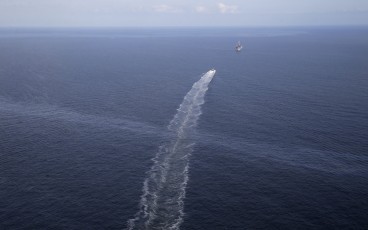
Numerous submarine landslides detected in the Gulf of Mexico
May, 25, 2020 | NewsIn a new study, scientists have identified 85, previously unknown, submarine landslides in the Gulf...
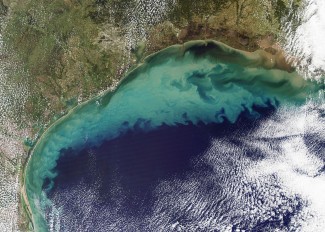
Why is the Gulf of Mexico so rich in fossil fuel deposits?
May, 13, 2021 | NewsDespite the continuous exploration, the Gulf of Mexico still has enormous quantities of oil and gas...
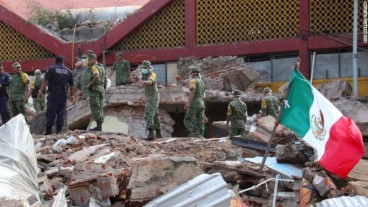
Mexico earthquake was the strongest in a century
Sep, 09, 2017 | NewsDozens of people have been reported dead Dozens of people have been reported dead Read more
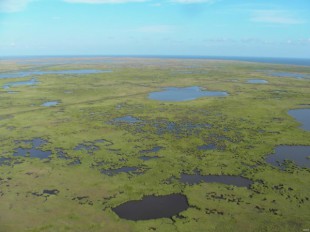
A new study predicts that Mississippi Delta may drown for good
May, 22, 2020 | NewsAccording to a new study, the marshes in the Mississippi Delta may permanently drown as a result of...

Subway bridge collapses in Mexico City: At least 24 casualties
May, 10, 2021 | NewsAt least 24 people have died after a subway overpassed collapsed in Mexico City. The incident occ...
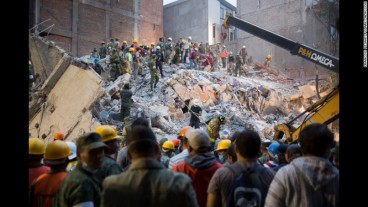
The powerful 7.1 magnitude quake in Mexico left more than 230 people dead and dozens of buildings collapsed
Sep, 20, 2017 | NewsThe US Geological Survey predicted up to 1,000 fatalities will come from the earthquake, and an econ...

Colorado River Tops Endangered Rivers List
Apr, 07, 2015 | NewsThe environmental group American Rivers, released a list of the top ten rivers in the country facing...
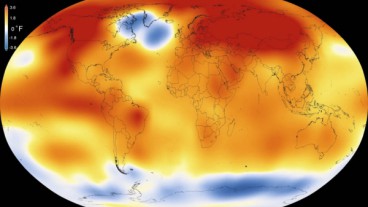
2015 was the warmest year on record :(
Mar, 02, 2016 | NewsThe record-breaking year continues a long-term warming trend — 15 of the 16 warmest years on r...

India sets plan to create world’s longest river to reduce floods and droughts
Jan, 17, 2017 | NewsScientists warn about serious consequences on ecosystems and coastlines Scientists warn about ser...
Trending

Vertical gardens in Mexico City to combat pollution

Characteristics of Load Bearing Masonry Construction

Taipei 101’s impressive tuned mass damper

Saudi Park Closed After 360 Big Pendulum Ride Crashes to Ground, 23 injured

Dutch greenhouses have revolutionized modern farming

Federal court rules Biden’s offshore drilling ban unlawful


